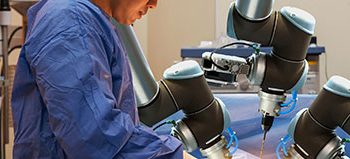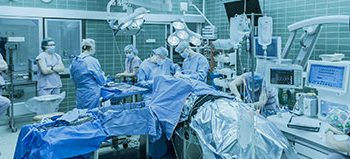Overview of in vitro toxicology testing
In vitro toxicology testing is the use of laboratory techniques to assess the potential toxicity of a substance. This type of testing is used to evaluate the safety of chemicals, drugs, and environmental contaminants. It involves the use of cell cultures, isolated cells, and/or tissue slices to study the effects of a chemical on a living system. The goal of in vitro toxicology testing is to measure the effects of a substance on the biochemical and/or physiological processes of the system. This type of testing can provide valuable information about potential health risks associated with exposure to a chemical or other agent. It can also help identify potential therapeutic targets for drugs in development.
Research Applications
- Drug Discovery & Development
In vitro toxicology testing is used in drug discovery and development to assess the safety of potential new drugs and to determine the dose levels that can be safely administered. This testing is conducted in a laboratory setting using cell culture, animal models, and computer models to evaluate the potential toxicity of a compound. In vitro tests can be used to evaluate the biological effects of a drug on cells, organs, and tissues, as well as to examine the potential for drug-drug interactions. These tests can also be used to identify biomarkers of toxicity and to predict the pharmacokinetics and pharmacodynamics of a drug. In vitro toxicology testing can help to reduce the number of animal studies needed to evaluate the safety of a drug, as well as to reduce the costs associated with drug development.
- Toxicity Profiling
In vitro toxicology testing in toxicity profiling can include tests such as Ames tests, mammalian cell culture tests, cytotoxicity testing, cell-based assays, and genotoxicity assays. These tests can be used to determine the potential toxicity of a new drug or chemical compound in order to assess its safety for human use or environmental exposure. Ames tests are used to detect mutagenic potential, mammalian cell culture tests measure cellular responses to potential toxins, cytotoxicity testing evaluates the toxicity of a compound based on the effects on cell viability, and cell-based assays measure changes in cell structure or function in response to a compound. Genotoxicity assays measure the potential for cytogenetic damage of a compound.
- Carcinogenicity
In vitro carcinogenicity testing is conducted in the laboratory using cell cultures to determine if a substance has the potential to cause cancer. This type of testing is used to identify potential carcinogens and evaluate their effects on cells and tissue. Tests typically involve exposing cells to a substance or its derivatives and measuring the changes in cell morphology, cell viability, and gene expression. Some tests may also assess the ability of a substance to induce genetic mutations or other types of chromosomal alterations. The results of these tests can help to identify potential carcinogens and inform the risk assessment process.
- Genotoxicit
Genotoxicity is the ability of a substance to damage genetic material, and can be caused by physical, chemical or biological agents. In vitro toxicology testing is used to evaluate the potential genotoxicity of a substance. In vitro genotoxicity tests typically involve exposing cultured cells to varying concentrations of a test substance and then analyzing the cells for signs of genetic damage. Tests used to assess genotoxicity include the Ames test, the micronucleus test, and the comet assay. The results of these tests can provide valuable information about the potential genotoxicity of a substance, which is important for assessing its safety for use in humans.
In Vitro Toxicology Testing Market Growth and Forecast
The global in vitro toxicology testing market was valued at USD 11.2 billion in 2022 and is projected to reach USD 18.6 billion by 2027, growing at a CAGR of 10.8% during the forecast period of 2022 to 2027. Increasing demand for in vitro toxicology testing, government initiatives and regulatory policies, and technological advancements are the major factors driving the in vitro toxicology testing market.
In Vitro Toxicology Testing Market Segmentation
The in vitro toxicology testing market is segmented into product, Toxicity Endpoints, Technology, Method, Industry, and geography.
By product and service, the consumables segment is expected to account for the largest share of the in vitro toxicology testing market. During the forecast period in the toxicity endpoints and tests market, the organ toxicity segment is expected to grow at the highest in the market. Based on the technologies used in the in vitro toxicology testing, the cell culture technologies segment is expected to account for the largest share of the in vitro toxicology testing market
Geographically, the market is divided into North America, Europe, Asia-Pacific, South America, and the Middle East & Africa. The APAC market is projected to register the highest growth during the forecast period. Factors such as, opposition to animal testing resulting in the use of alternate methods.
Rfelated Links:


